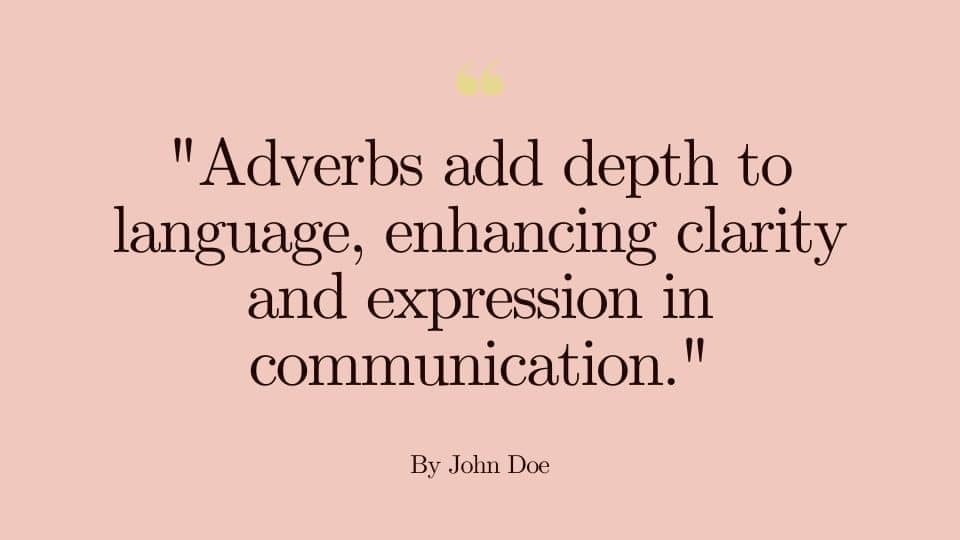
Adverbs are essential words that help you make your sentences more precise and detailed. Their descriptions help you communicate a more precise message by indicating the how, when, where, and extent of actions. You will learn about the different kinds of adverbs in this article and how to use them in your writing.
.
What are adverbs?
Adverbs can be used to modify other adverbs, verbs, and adjectives. For instance, in the sentence “She runs quickly,” the adverb “quickly” modifies the verb “runs,” giving us more details about her running technique. They also address questions like “How?” “When?” “Where?” and “To what extent?”
Types of adverbs
- Adverbs of manner:
These adverbs explain the course of an action. For example, the adverb “softly” describes how he spoke in the sentence “He spoke softly.” “Loudly,” “happily,” and “carefully” are more examples.
- Adverbs of time:
Time adverbs indicate the exact moment an action occurs. For instance, “tomorrow” is used in “She will arrive tomorrow” to denote the arrival time. Other terms include “yesterday,” “soon,” and “later.”
- Adverbs of place:
These adverbs describe the location of an action. The location of the action is described by the adverb “everywhere” in the sentence “He looked everywhere.” “Here,” “there,” and “nearby” are some more instances.
- Adverbs of frequency:
Frequency adverbs describe the frequency of an action. For example, the word “always” in “They always eat breakfast” indicates how frequently the action occurs. “Often,” “never,” and “rarely” are more examples.
- Adverbs of degree:
These adverbs characterize the degree or ferocity of an adjective, another adverb, or an action. The adverb “very” in “She is very tired” emphasizes the adjective “tired.” “Too,” “almost,” and “quite” are some additional examples.
When writing, employ adverbs
Adverbs improve your writing by giving it more clarity and detail. They enable you to make your sentences clearer and vividly describe actions. Take “He drives” and “He drives carefully,” for instance. We can see more clearly how he drives in the second sentence.
Tips for using adverbs
- Pick the appropriate adverb:
Make sure the adverbs you choose effectively express the meaning you intended. If you think that powerfully describes a singing style more accurately, you could say that the person sings powerfully rather than loudly.
- Avoid overuse:
The overuse of adverbs can complicate your writing even though they add detail. Picking adverbs for your sentences that have a purpose is essential.
- Place adverbs carefully:
An adverb’s placement within a sentence can alter its meaning. “Only he finished the race,” for instance, differs from “He only finished the race.” While the second sentence suggests that he only completed the race, the first indicates that he was the only one who did so.
.

Conclusion
The use of adverbs can significantly improve your writing. You can communicate more effectively by using the crucial details they provide. You can write more precisely, concisely, and engagingly by being aware of the various adverb forms and applying them carefully.
Adverb worksheets with answers
- Adverb worksheet for 2nd grade
- Adverb worksheet for 3rd grade
- Adverb worksheet for 4th grade
- Adverb worksheet for 5th grade
- Adverb worksheet for 6th grade
- Adverb worksheet for 7th grade
